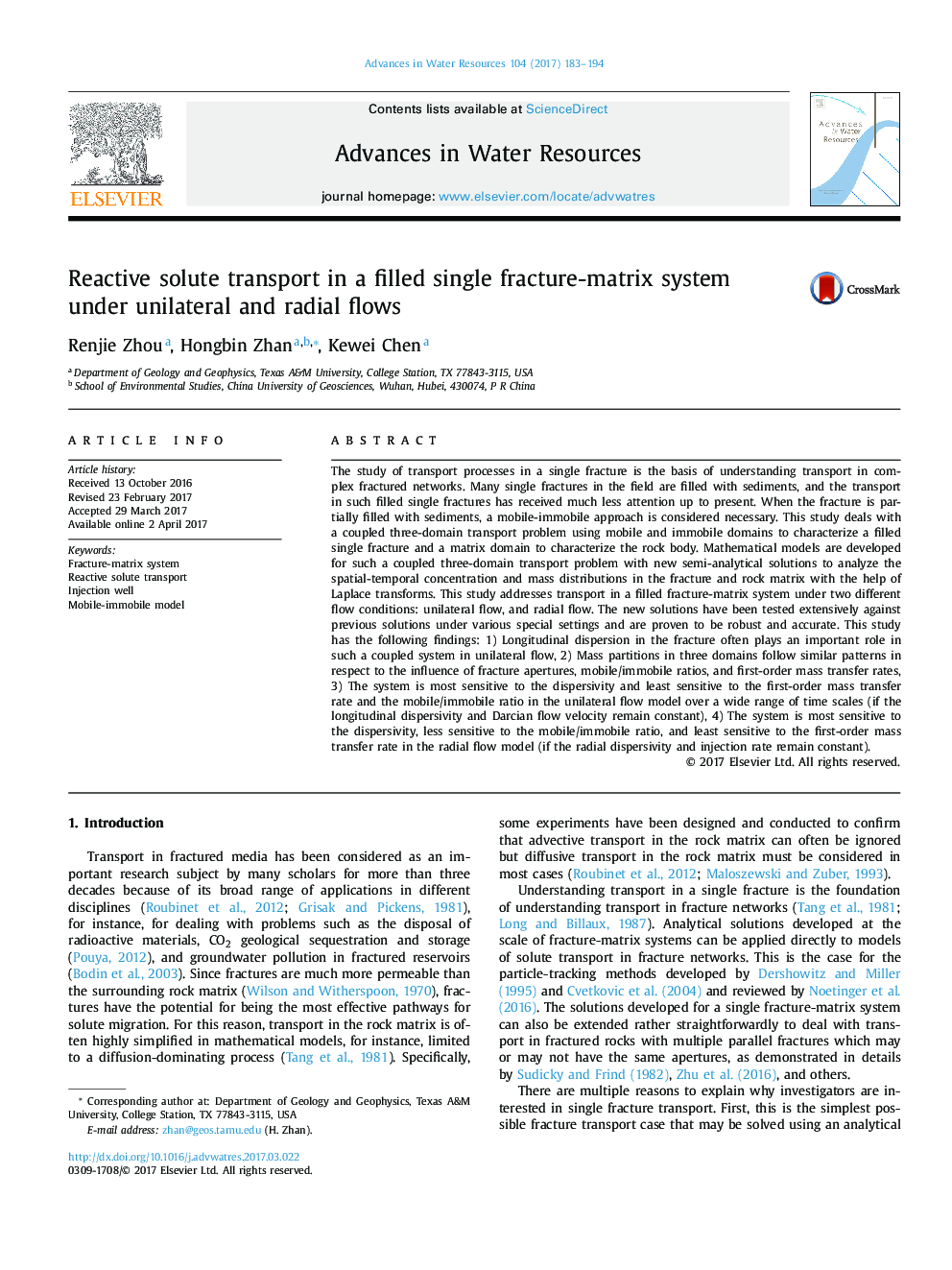| Article ID | Journal | Published Year | Pages | File Type |
|---|---|---|---|---|
| 5763780 | Advances in Water Resources | 2017 | 12 Pages |
Abstract
The study of transport processes in a single fracture is the basis of understanding transport in complex fractured networks. Many single fractures in the field are filled with sediments, and the transport in such filled single fractures has received much less attention up to present. When the fracture is partially filled with sediments, a mobile-immobile approach is considered necessary. This study deals with a coupled three-domain transport problem using mobile and immobile domains to characterize a filled single fracture and a matrix domain to characterize the rock body. Mathematical models are developed for such a coupled three-domain transport problem with new semi-analytical solutions to analyze the spatial-temporal concentration and mass distributions in the fracture and rock matrix with the help of Laplace transforms. This study addresses transport in a filled fracture-matrix system under two different flow conditions: unilateral flow, and radial flow. The new solutions have been tested extensively against previous solutions under various special settings and are proven to be robust and accurate. This study has the following findings: 1) Longitudinal dispersion in the fracture often plays an important role in such a coupled system in unilateral flow, 2) Mass partitions in three domains follow similar patterns in respect to the influence of fracture apertures, mobile/immobile ratios, and first-order mass transfer rates, 3) The system is most sensitive to the dispersivity and least sensitive to the first-order mass transfer rate and the mobile/immobile ratio in the unilateral flow model over a wide range of time scales (if the longitudinal dispersivity and Darcian flow velocity remain constant), 4) The system is most sensitive to the dispersivity, less sensitive to the mobile/immobile ratio, and least sensitive to the first-order mass transfer rate in the radial flow model (if the radial dispersivity and injection rate remain constant).
Related Topics
Physical Sciences and Engineering
Earth and Planetary Sciences
Earth-Surface Processes
Authors
Renjie Zhou, Hongbin Zhan, Kewei Chen,
